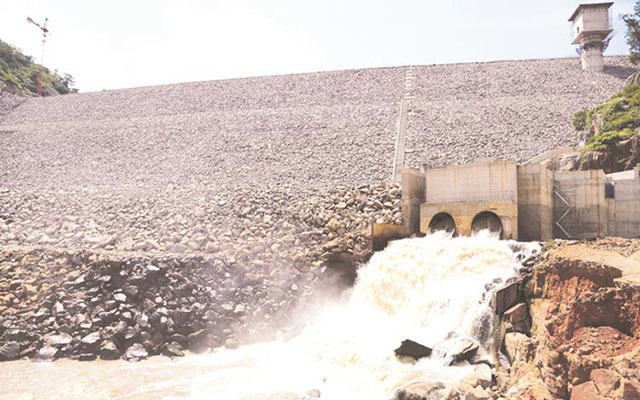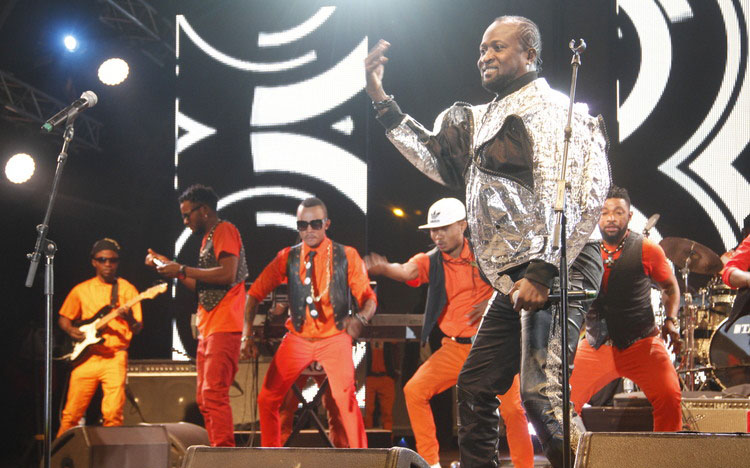Special Cabinet committee for Tokwe Mukosi


Tokwe Mukosi Dam was built at a cost of nearly $300 million and has capacity to hold 1,8 billion cubic metres of water
George Maponga Masvingo Bureau
Government has set up a special Cabinet committee to manage the development of infrastructure and land use pattern around the recently commissioned Tokwe-Mukosi Dam in Chivi, that was built at a cost of nearly $300 million.
Tokwe-Mukosi is Zimbabwe’s largest inland dam, with a full capacity of 1,8 billion cubic metres of water and will turn Masvingo into a perennial greenbelt, as the reservoir has potential to irrigate over 25 000 hectares every year.
Besides irrigation, the dam will also generate 15 megawatts of power once a planned mini-hydro power plant is installed, while opportunities for tourism and a thriving fisheries industry abound.
The decision to form a special Cabinet committee on the dam follows fears of haphazard developments around Tokwe-Mukosi as investors stampede to cash in on opportunities.
There were fears that prime land around the dam might be grabbed by well-connected investors at the expense of locals.
Masvingo provincial administrator Mr Fungai Mbetsa confirmed that a special Cabinet committee comprising ministers had been formed to manage developments at Tokwe-Mukosi.
Mr Mbetsa said Government wanted organised development at the dam.
‘’There is a Cabinet committee that was recently set up to manage developments at Tokwe-Mukosi because there were fears that chaos could obtain at the dam with investors rushing to exploit opportunities there,’’ he said.
‘’All ministries that have something to do with the dam such as Environment, Water and Climate, Energy and Power Development, Tourism and Hospitality Industry are in that special Cabinet committee because Government wants planned developments at the dam.
“Already, there were false reports circulating that all land around the dam has been snapped up, so this committee will be responsible for making sure all the developments at the dam are planned.”
Mr Mbetsa said development at the dam would be guided by a master plan that was undergoing re-evaluation by a consultant.
‘’There is an old Tokwe-Mukosi development master plan that was done before independence, but Government appointed another consultant who is already on the ground to validate whether the first master plan is still relevant or not,’’ he said.
Mr Mbetsa said if the situation had changed, the consultant would effect changes on the old master plan to come up with a relevant plan that would guide Government accordingly.
Once the master plan is ready Government will then give the nod for developments to start at Tokwe-Mukosi, which is expected to engender widespread socio-economic transformation in southern Masvingo.
Finance Minister Patrick Chinamasa recently warned that Government would not condone unplanned developments at Tokwe-Mukosi, as the State wanted organised developments for the country to draw economic benefits from the dam.
Minister Chinamasa, who was speaking during the official launch of the Klipsham Housing project on the outskirts of Masvingo city, said Tokwe-Mukosi had the potential to economically transform the province owing to the vast opportunities offered by the dam.
There are plans to build hotels and casinos at the dam, tapping on its scenic topography, while the mini-hydro power plant will produce enough electricity to light up the entire Masvingo province.
A conurbation stretching from the sugar growing town of Chiredzi right up to Mwenezi is envisaged, while a fisheries project is also expected to create thousands of jobs.
Sugar production in the Lowveld will shoot up by 15 percent once water from Tokwe-Mukosi starts irrigating the plantations, while a $400 million ethanol plant is planned at Nuanetsi Ranch by a consortium of private investors fronted by business mogul Mr Billy Rautenbach.





Comments